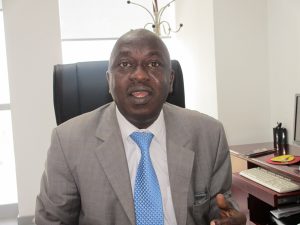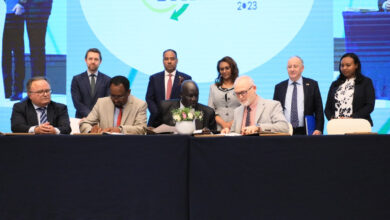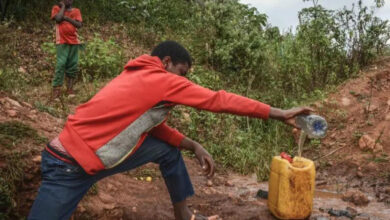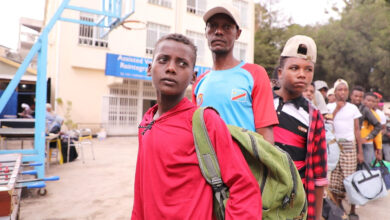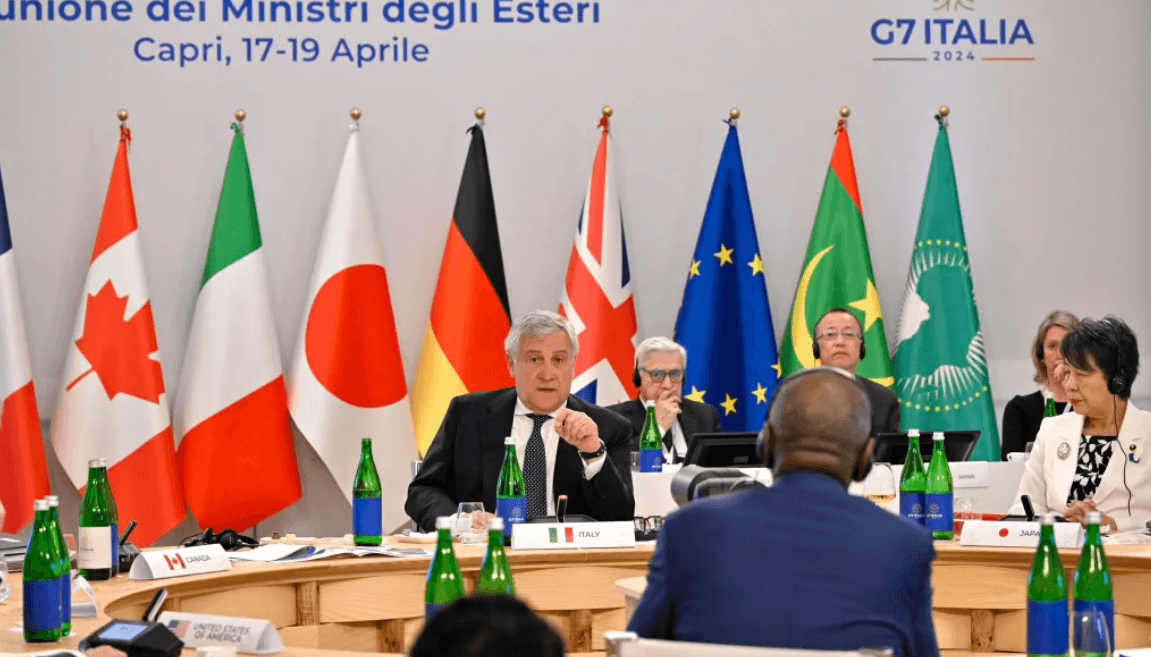Infrastructure in Africa:A sad story that may no longer be
The story of infrastructure in Africa is simply depressing. That may be about to change now but the final push is hanging in the balance of its leaders’ resolve
Addis Standard’s exclusive with:
v Donald Kaberuka – President of the AfDB
v Ibrahim Mayaki – CEO of the NEPAD Coordinating and Planning Agency
v Aboubakari Baba Moussa – AUC Director of Infrastructure & Energy and
v Jay Ireland – President & CEO of GE Africa
by Tsedale Lemma
In the midst of the stormy gathering in Addis Ababa of the 18th AUC summit at the end of January this year, on Monday Jan. 30th 2012, a sideline meeting of the 54 heads of state and government officially endorsed the launching of an ambitious yet little known initiative called Program for Infrastructure Development in Africa (PIDA), a multi-billion dollar initiative that has first surfaced in July 2010 in Kampala, Uganda, on the sidelines, again, of the 16th AU summit.
A year and half later PIDA succeeded to become one of the few common agendas that have brought the 54 African countries into a rare harmony. The lead agenda during January 2012 summit was the election of the next Chairperson, which the leaders have failed to do. It would have been a complete waste of yet another chance for Africa had they have also failed to throw their backing behind PIDA.
What’s in it?
PIDA is a program sponsored by the African Union Commission (AUC), the African Development Bank (AfDB) and NEPAD’s Planning and Coordinating Agency (NPCA), and is working to develop priority regional and continental integrated infrastructure networks and services in four key sectors: transport, energy, ICT and trans-boundary water.
Approved by the entire African states means this multi-billion dollars initiative is mandated to bring together various regional and continental infrastructure initiatives in the four sectors into a coherent program for the benefit of the entire continent. It has set out short-term, medium-term and long term goals to be achieved by 2020, 2030, and 2040 respectively. Accordingly, PIDA’s Priority Action Plan has identified 51 projects in the four key sectors across Africa to be achieved during its short term goal for 2020 at a cost of close to $ 68 billion.
“This is the first time Africa has put on the table for all stakeholders a consensus for infrastructure development meant for the entire content; this is the first time Africa is speaking in one voice both at regional and continental level and PIDA will be the harmonizing and the heart of boosting this voice,” says Aboubakari Baba Moussa, Director of Infrastructure & Energy at the AUC.

The 51 projects hand-picked by PIDA’s priority action plan in all the four sectors are located throughout the continent and are groomed to benefit countries within the same regions in most cases, but also across the continent in some cases. The Great Millennium Renaissance Dam in Ethiopia, for example, is identified as number one project in energy that will benefit countries both within the Common market for Eastern and Southern Africa (COMESA) and member states of the Intergovernmental Authority on Development (IGAD); and Inga III Hydro Power project in DRC Congo is hoped to benefit countries within the Economic Community of Central African States (ECCAS). In the transport sector projects such as North-South Multimodal Corridor, a road project that will connect South Africa, Botswana, Zimbabwe, Zambia, Malawi and DRC, and Northern Multimodal Corridor connecting Kenya, Uganda, Rwanda, and Burundi are included in the first 51 priority projects of which 15 are in energy, 24 in transport, nine and three, in transboundary water resource and ICT sectors respectively.
Not business as usual
All of these projects are at various levels of construction by the individual countries which launched them. But now, with PIDA in the corridor, the main task would be to help solicit funding for these projects and reshape their individual benefits to become regional and continental. “PIDA will be taking over regional programs already in place and bring them together for the benefit of the continent,” Mr. Baba Moussa said.
Africa’s economy is expected to grow at an average 6% a year between 2010 and 2040. The AfDB estimates that during this 30 years period, “the GDP of African countries will multiply sixfold, and the average per capita income will rise above $10,000 for all countries.”
This is good news for everyone. But it is also a reminder that growing at such rate means the demand for infrastructure in the continent will push the limits of its future shapers. PIDA estimates that power demand from Africa will increase from 590 terawatt hours (TWh) in 2010, to more than 3,100 TWh in 2040; transport volumes will increase 6–8 times, with a particularly strong increase of up to 14 times for some landlocked countries. Port handling capacity throughput the continent will rise from 265 million tons in 2009, to more than 2 billion tons in 2040; Water needs will push some river basins— including the Nile, Niger, Orange and Volta basins—to the ecological brink; and Information and communications technology (ICT) demand which is around 300 Gigabits per second in 2009, will reach 6,000 gigabits per second already by 2018.
Other economic analyses indicate that Africa’s forecasted growth will be driven more by its rising middle class population, increasing levels of education and tech savvy generation than by the insignificant capacity of the continent’s miserable infrastructure facilities.
Jay Ireland, President and CEO of GE Africa, told this magazine that without keeping the pace of its infrastructure with that of its growing middle class Africa would be at a “chock point” from where it won’t be able to grow an inch forward.
At this year’s World Economic Forum for Africa, held between 9th – 11th May 2012 here in Addis Ababa, the issue of improving the continent’s infrastructure was given a top priority and has attracted panelists including Prime Minister Meles Zenawi, former UK Prime Minister Gordon Brown, who passionately talked of the “51 projects” and AfDB’s President Donald Kaberuka.
A fierce debate between these public figures and private sector representatives such as Ahmed Heikal, Chairman and CEO of Citadel Capital of Egypt and Jubril Adewale Tinubu, group chief executive of Oando of Nigeria, came to a firm conclusion that effective public private partnership, PPP, is the only antidote for Africa’s infrastructure woe.
This is well understood within PIDA too. “PIDA is not business as usual,” says Mr. Baba Moussa. Unlike any other initiatives in Africa PIDA appears to be so important that if Africa fails to give it its last, coordinated push through an effective partnership between the public and the private sector, the continent’s doom and glum will be the legacy waiting for the next generation.
It’s the politics & institutional capacity more so than the money
The sheer concept of PIDA is too good to be true. But it’s also a project that calls for great compromises amongst the 54 African states. If the 51 projects come to a fruitful conclusion by the year 2020, countries throughout the continent are poised to share resources and open up their borders to allow free movement of goods and people. The leaders of the continent know this all too well when they have endorsed PIDA in January this year.
But while their willingness to implement PIDA mostly sees the benefit at regional and continental level, rightly so, the two fundamental challenges PIDA projects will face are politics at individual countries level and weak institutional capacity within the AUC and NEPAD, the first is responsible mainly for earning PIDA projects the political will from the 54 countries while the second is responsible to provide the technical assistance needed to implement the projects.
First although politically a lot has changed in the past ten years, many countries in Africa are still notorious for their unpredictability. On the contrary investment in infrastructure is big and its return slow. Jay Ireland of GE, whose company’s presence in Africa dates back to 1898 and is involved in extensive investment ranging from aviation, capital, energy, healthcare and transportation, among others, rightly put it when he said, “investors need some certainty and stability that they are going to get a return in their investment.”
Unfortunately, so far, that is just about everything many African countries are not able to guarantee, pushing their own millionaires and foreign investors alike to feel more comfortable in depositing their made-in-Africa larges in foreign banks than investing it back in long-term investments in the continent. This has also resulted in zero trust between the private sector and many governments in Africa.
Mr. Baba Moussa attests to that too, and says PIDA’s other challenge, apart from effectively selling its programs both to the public and private sectors, would come in the form of convincing African leaders that, even if there was a change in government, it ought to remain a political change that should not affect long term contracts signed between private businesses and a given government.
The second challenge is whether NEPAD has the capacity to provide technical support for PIDA projects. In the past NEPAD has been struggling to get its structural organization approved by the PRC, league of ambassadors accountable to the executive council of the AUC.
Ibrahim Mayaki, CEO of the NEPAD Coordinating and Planning Agency, told this magazine in January 2012 that without an approved structural organization NEPAD will not be able to deliver what’s expected of it. Having its structural organization approved means three things were to change dramatically, according to Mr. Mayaki. “First we would have stable staff than short term contract employees; second, having a stable staff means we know our commitments in terms of how we implement our projects. Thirdly, it will enable us to coordinate our tasks better with the AU to deliver on various strategic frameworks designed by it.”
NEPAD’s organizational structure was finally approved by the PRC in March this year. But more than that, it needs to get hold of and be able to retain the right technical team that it is accused of lacking.
Money matters too, of course
Africa is now at a critical junction where even leaders such as Meles Zenawi, known for his tight grip on the economy, openly admit involving the private sector in infrastructure investment is indispensible.
AfDB is responsible for providing the financial support needed to implement the PIDA projects. Speaking with this magazine, Donald Kaberuka, its president, says that funding has been secured for some of the PIDA projects that are already under construction. Money for other projects may take some time to come. “That is why we are all struggling hard. But it’s doable.”
Even controversial projects such as Ethiopia’s Great Millennium Renaissance Dam, which “I think is an excellent project,” Mr. Kaberuka says, may get financial support from his Bank. But its social and environment impacts must be assessed first and conditions met.
50% of the $ 68 billion earmarked for the first 51 projects planned for 2020 is expected to come from domestic resources – i.e. national investment budgets and private sector financing – the later through public-private partnerships and equity investments, according to Mr. Baba Moussa. The share of private sector financing for PIDA projects is expected grow to about “two-thirds in 2030 and as much as 75% in 2040”.
If there is ever time for Africa to assure its own corporate wunderkinds and the big global investors with a big appetite for Africa now is the time and trust between governments across Africa and the private sector, both foreign and domestic, is the game.
Without effective involvement by companies such as GE, long term infrastructure financings are hard to come by. The failed election in January 2012 for the chairperson of the AUC will take place this July in Malawi, Lilongwe. But unlike in January, African heads of state and government must put their acts together and give priority where it’s due. They have endorsed PIDA during a sideline meeting then; it’s time to make it a top priority now. Getting PIDA wrong will be a historic mistake.


